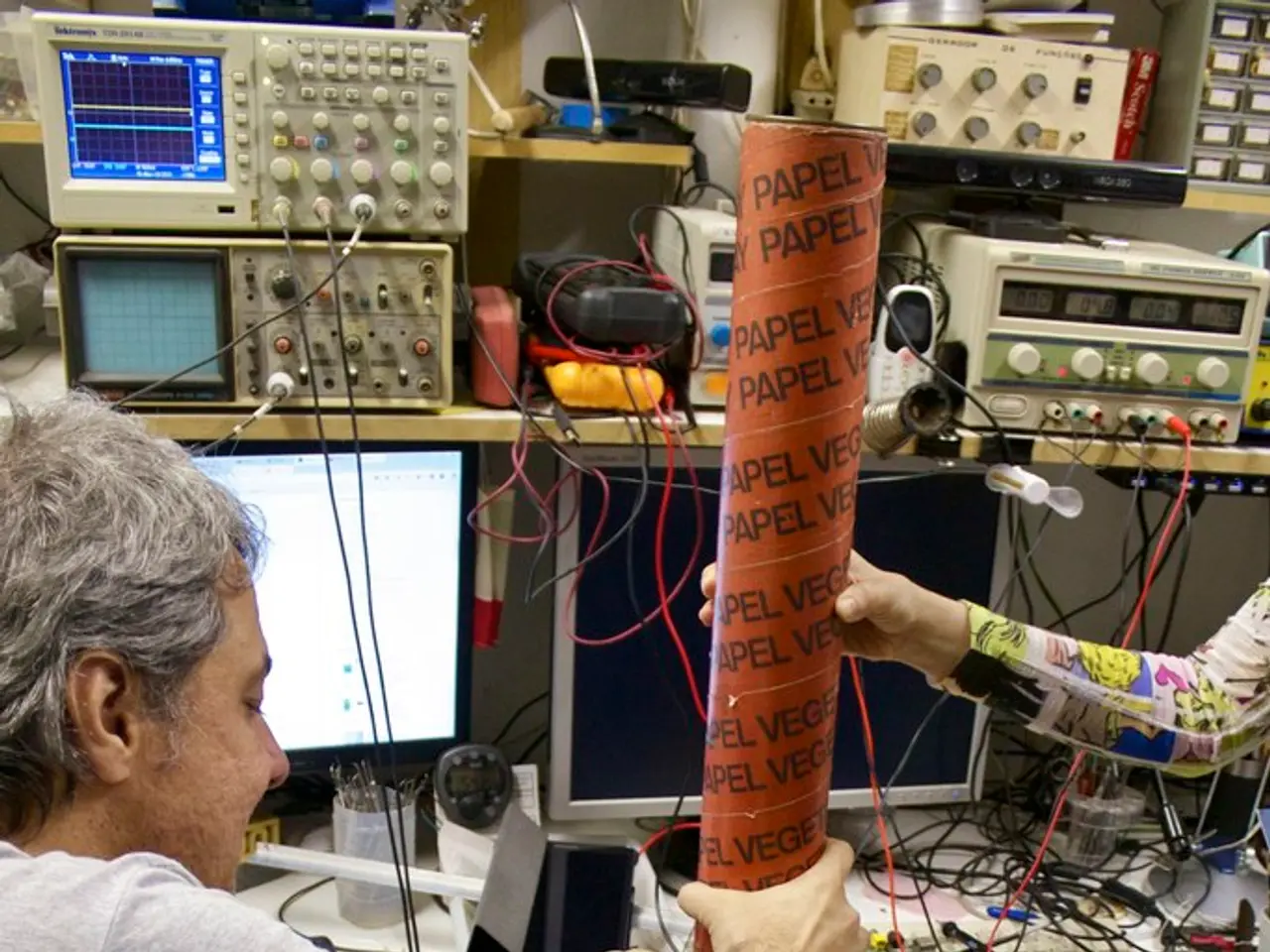Navigating the Compassionate Juggle of Tech and Humanity in Future Work Environments
In today's fast-paced digital era, organizations are striving to strike a balance between integrating technology and maintaining a human touch in the workplace. This approach, known as a people-first strategy, combines the strengths of technology with genuine human connection and emotional intelligence.
Key strategies for implementing a people-first approach include actively listening to employees and managers' needs, simplifying technology use, supporting managers, normalizing open conversations about wellbeing, prioritizing empathy during technological transitions, using AI ethically and transparently, integrating human-centered AI and technology into HR, and maintaining focus on emotional intelligence and human skills as differentiators.
Listening to employees and managers is crucial in understanding their needs and ensuring that technology serves them effectively without overwhelming them with complexity. Deploying tools that streamline and simplify the experience makes wellbeing resources more accessible and less intrusive, allowing humans to focus on empathy and connection rather than administrative burdens.
Equipping managers with the right tools to check in, recognize, and support their teams is essential. Leadership support and modeling of empathetic behaviors foster a culture where technology amplifies human care instead of replacing it. Normalizing open dialogue about mental health and wellbeing reduces stigma, increases employee engagement with support tools, and reinforces the human element behind the technology.
During technological transitions, particularly when introducing AI or generative technologies, organizations must proactively address the emotional impact on employees. Validating their feelings, providing reassurance, and offering training and counseling helps reduce resistance and build trust.
AI can help detect early signs of burnout, personalize development, and identify management issues, but it must be deployed with transparency and privacy to empower employees rather than surveil or replace human judgment. This allows employees and managers to focus on complex challenges and relationship-building, where empathy is critical.
Leveraging AI as an employee-centered service enhances HR operations while keeping people at the core, ensuring technology supports rather than supplants the human touch. Even amidst automation, skills like empathy, interpersonal communication, and emotional support remain what truly drive employee satisfaction, retention, and workplace culture.
Employees who are equipped with emotional intelligence can understand underlying emotions during conflicts, leading to more effective resolutions. As machines handle routine work, employees take on more strategic responsibilities, allowing them to focus on tasks requiring creativity, critical thinking, and emotional intelligence.
Sharing real success stories showing how upskilled employees improved outcomes or solved client issues can inspire employees. However, it's important to note that algorithms used in workplace technology may unintentionally create bias in hiring or employee evaluations. Organizations should implement oversight to prevent unfair or discriminatory outcomes.
In essence, organizations succeed by putting people at the center, letting technology do the heavy lifting, and fostering a culture where empathy and human connection are embedded in every tech-enabled process. This balanced integration builds a healthier, more inclusive workplace that attracts and retains talent while leveraging technology’s power to enhance—not replace—the human touch.
- The people-first strategy in today's digital era focuses on balancing technology integration with genuine human connection.
- Simplifying technology use is crucial to making wellbeing resources accessible and reducing their intrusiveness.
- Managers, equipped with the right tools, play a significant role in checking in, recognizing, and supporting their teams.
- Emphasizing empathetic leadership behaviors encourages a culture where technology supports human care rather than replacing it.
- During technological transitions, addressing the emotional impact on employees by validating their feelings and providing support helps reduce resistance.
- AI, when deployed ethically and transparently, can help with early burnout detection, personalized development, and identifying management issues.
- By integrating human-centered AI and technology into HR, organizations can ensure these tools support rather than replace the human touch.
- In the workplace, emotional intelligence remains vital in understanding underlying emotions during conflicts, enabling effective resolutions, and driving employee satisfaction, retention, and culture. Furthermore, organizations should be vigilant about preventing bias in hiring or employee evaluations when using workplace technology.




